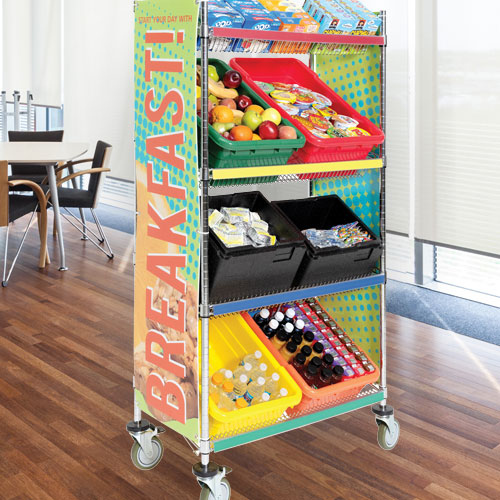We care a lot about your experience on our website. Please tell us how we can improve.
If you want an immediate response, chat with us now
Schools participating in the School Breakfast Program (SBP) receive reimbursement for the meals they serve. Failing to be more innovative in their approach to increase breakfast participation leaves millions of federal dollars untapped that could be used to feed low-income students. For that reason, schools are implementing alternative service models - such as Breakfast in the Classroom, Grab & Go Breakfast and Second Chance Breakfast - which are transforming their breakfast program and increasing overall breakfast participation.



Studies have shown that breakfast is the key ingredient for children's health, cognitive development and academic achievement.
Unfortunately, many kids skip breakfast regularly, depriving them of the important benefits associated with the morning meal.
Less than half of the students who are eligible for free or reduced-price breakfast are actually eating it.
Students who eat breakfast at school:
Perform better on standardized tests than students that eat breakfast at home or skip breakfast altogether.
Experience improved concentration, alertness, comprehension, memory and learning.
See improved math grades, attendance and behavior.

Research has shown that schools serving breakfast in the cafeteria often struggle to increase participation for reasons outside of their control. Reasons for low breakfast participation include:
Moving breakfast out of the cafeteria and making it part of the school day eliminates many of the barriers attached to a traditional cafeteria-based breakfast. Schools that have implemented these alternative breakfast models report student academic and behavior improvements, better school culture and a boost in school nutrition revenue.
The Breakfast in the Classroom model allows students to eat their breakfast during the first 10 to 15 minutes of the school day. The meals are transported on a cart to the classroom by the school nutrition staff and/or student volunteers following the opening bell. Teachers record the number of meals served and the trash is later removed by custodial staff. This model is commonly in elementary schools where children start the day in the same classroom with the same teacher each day. BIC is associated with the highest participation rates, which can be as high as 98%.
The Grab & Go Breakfast concept is as straightforward as it sounds. Students grab their breakfast from a hallway breakfast cart and eat it on the way to class or during the first 10 to 15 minutes of the school day. School nutrition staff records the number of meals served. With disposable packaging and strategically-placed trash receptacles, this breakfast model is a practical way to reach hungry students in a hurry, increase participation in your school breakfast program and ensure the school food service department receives funds for reimbursable meals. Grab & Go is a good option for schools that don't have the resources to deliver meals to individual classrooms.


The Second Chance Breakfast model gives students who don't have time to eat or are not hungry before the start of the school day, a second opportunity to eat breakfast (typically between 9 a.m. and 10 a.m.). Similar to the Grab & Go model, students pick up a pre-packaged item from a mobile hallway cart to eat during a morning break on the way to their next class. This model works particularly well for secondary schools, because older students tend to arrive closer to the start of the school day.


Our education experts are working with professionals like you every day to satisfy students and meet participation goals. Speak with one of our education experts today to learn how!